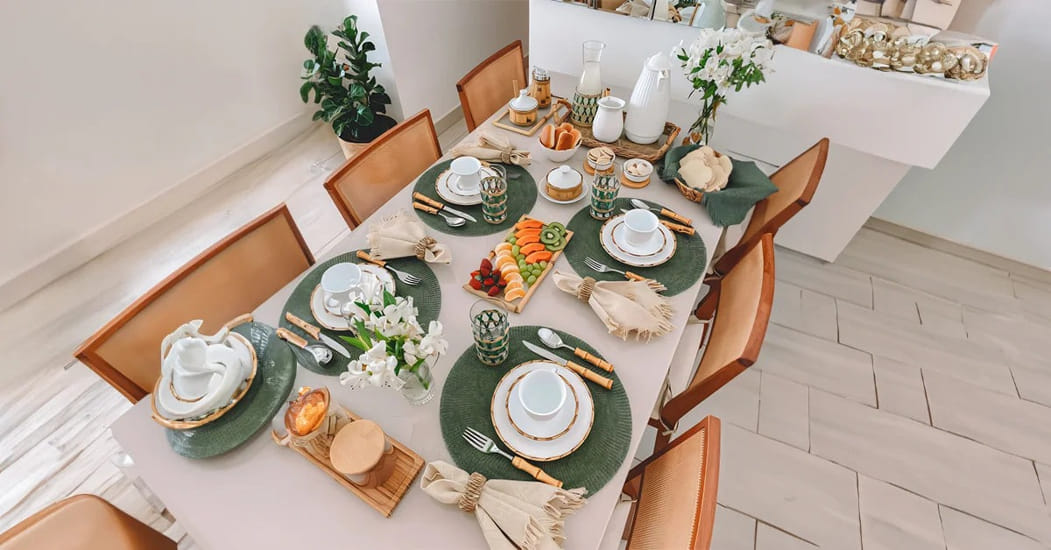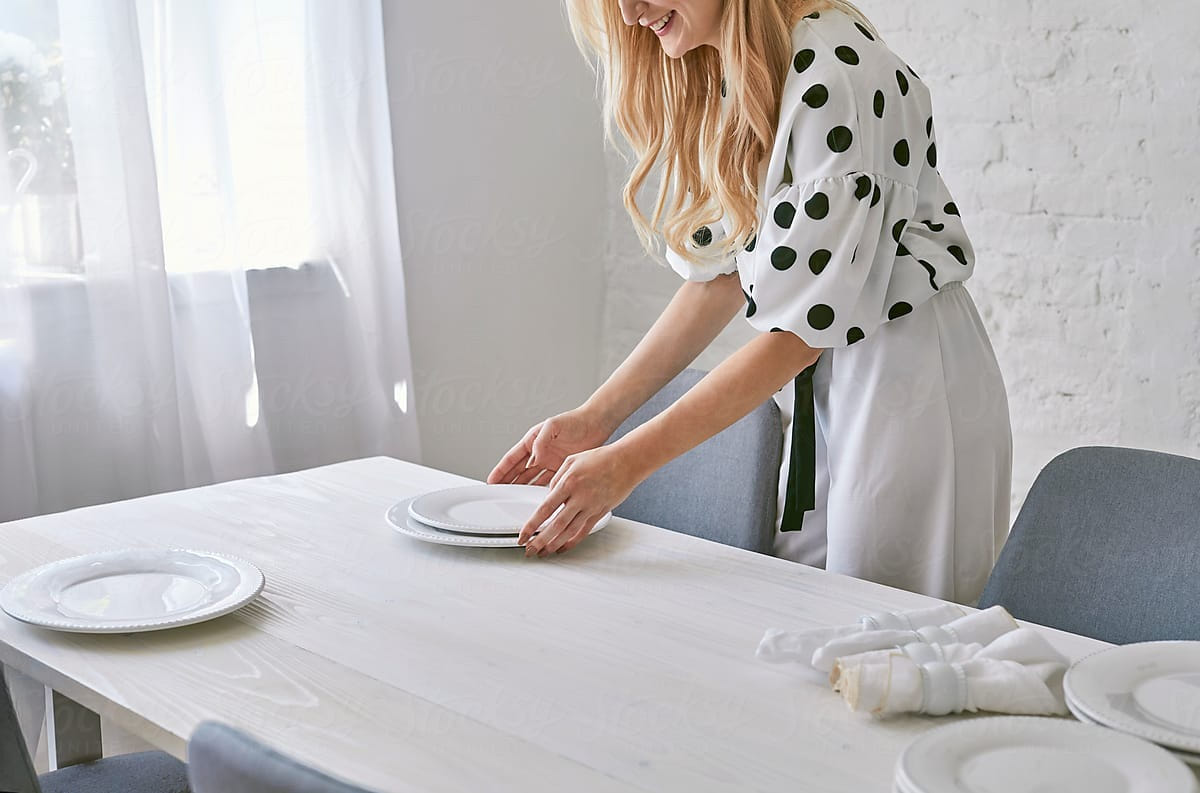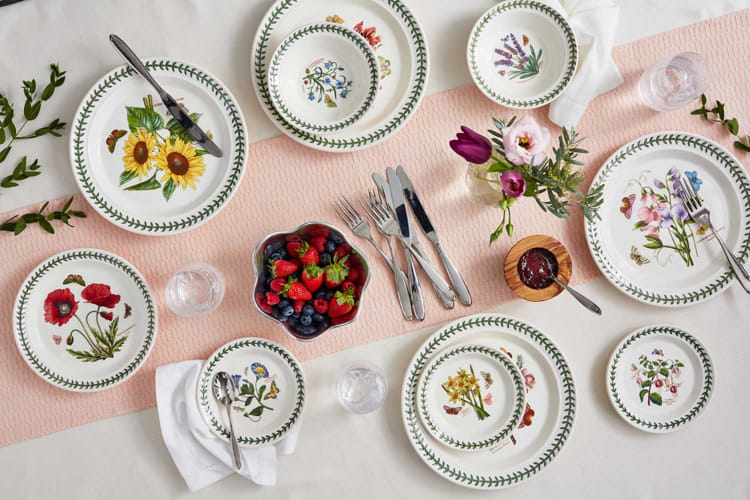You deserve a dining experience as delightful as the food you serve, and the perfect plates is necessary to achieving that. When choosing perfect plates for your table, consider factors such as material, design, and size, which can all influence the ambiance of your meals. From elegant porcelain for formal occasions to rustic stoneware for casual gatherings, your choices can enhance your presentation and reflect your personal style. Join me in exploring how to make thoughtful selections that will elevate your dining experience for every occasion.
Key Takeaways:
- Style: Select plates that align with your personal aesthetic and the overall theme of your dining space.
- Material: Consider the durability and practicality of different materials, such as porcelain, stoneware, or melamine, based on how you plan to use them.
- Size: Choose plates that are appropriately sized for your servings and the type of meals you typically prepare, ensuring they fit well on your table.
Determining Your Plate Style
While selecting the right plates for your table, it’s crucial to consider your dining context and personal aesthetic. The style of your plates can greatly influence the ambiance of your gatherings.
Formal vs. Casual Dining
The choice between formal and casual dining plates should align with the occasion. Formal dining settings typically require elegant china or fine porcelain, providing an air of sophistication. In contrast, casual meals benefit from versatile stoneware or earthenware, which is not only practical but can also offer a charming, rustic touch.
Modern vs. Traditional Designs
Your choice between modern and traditional plate designs can significantly reflect your personal taste and the atmosphere you wish to create. Modern plates often feature clean lines and unique colors, while traditional designs evoke nostalgia with intricate patterns and classic shapes.
Plate style plays a vital role in setting the tone for your dining experience. Modern aesthetics are ideal for those who appreciate minimalism and sleek aesthetics, often embracing bold colors and geometric shapes. In contrast, traditional designs resonate with those who cherish time-honored elegance, featuring ornate details and historical motifs. Understanding your style preferences will aid you in curating a cohesive and inviting dining atmosphere that reflects your unique personality.
Considering the Material
Even when you think you’ve found the perfect shape and design, the material of your plates plays a crucial role in their functionality and style. Choosing the right material can enhance your dining experience, giving you options that suit both everyday use and special occasions.

Ceramic vs. Porcelain
An necessary distinction between ceramic and porcelain lies in their composition and firing temperature. While both materials are beautiful and versatile, porcelain is denser and more durable, making it ideal for formal dining. Ceramics, on the other hand, often showcase a range of colorful glazes and designs, adding a touch of whimsy to your table.
Glass vs. Melamine
Considering the practicality of your tableware, glass is elegant yet fragile, whereas melamine offers a more durable and lightweight alternative. If you have children or frequently host outdoor gatherings, melamine can be an excellent choice, as it is less likely to shatter than glass making them perfect plates for your table.
Plus, melamine plates come in a plethora of fun colors and designs, allowing you to create a playful tablescape without sacrificing practicality. They are also dishwasher safe, making clean-up a breeze. However, be cautious as they are not microwave safe and can warp with excessive heat. Choose melamine for casual settings and worry less about breakage.
Earthenware vs. Stoneware
One significant difference between earthenware and stoneware is their firing process and durability. Earthenware is more porous and generally more prone to chipping, while stoneware is fired at higher temperatures, resulting in a tougher and less absorbent material that can withstand everyday wear and tear.
Stoneware is ideal for heavy use, as it is less likely to chip or crack. It also retains heat exceptionally well, keeping your food warm while you serve. However, earthenware often comes with charming, hand-painted designs perfect for creating a rustic or eclectic dining aesthetic. Ultimately, the choice between the two depends on your personal style and how you intend to use your plates.
The Importance of Size and Shape
All table settings require careful consideration of size and shape to create a visually appealing and functional dining experience. When dicking out your plates, it’s imperative to choose sizes that complement your food and enhance your table aesthetics. Different meals and occasions often call for distinct shapes that contribute to your dining theme, making it an important aspect of your overall decor.
Dinner Plates: Standard vs. Oversized
Importance lies in selecting the right size dinner plate for your meals. Standard plates usually range from 10 to 12 inches in diameter, ideal for everyday dining, while oversized plates can provide a dramatic flair during special occasions. Consider how much food you typically serve; large servings may require larger plates, while smaller portions can look understated on oversized options.
Salad Plates: Round vs. Square
Importance of choosing between round and square salad plates can alter the presentation of your dishes. Round plates are classic and versatile, while square plates have a modern appeal that can create striking contrasts with your table setting.
A round salad plate often conveys a sense of tradition and simplicity, making it suitable for both casual and formal dining. Conversely, square plates provide an edgy touch that can elevate your dining aesthetic and present your salad as a work of art. By mixing and matching these shapes, you can create a unique table setting that reflects your personal style.
Dessert Plates: Delicate vs. Whimsical
Whimsical dessert plates can add a layer of fun and creativity to your table. Delicate plates tend to have intricate designs that elevate the elegance of your dessert, making them perfect for formal gatherings. In contrast, whimsical plates can inject personality and charm into your table setting.
Round dessert plates often offer a timeless feel that pairs well with classic confections, while whimsical plates may feature quirky patterns or colors, drawing attention to the sweet treats you serve. When dicking out between these two styles, consider what mood you wish to convey and how your choices harmonize with the overall theme of your dining experience.
Color and Pattern Options

To create a visually appealing table setting, you should carefully consider the color and pattern options of your plates. The selection of vibrant hues or muted tones can greatly influence the overall ambiance of your dining experience. For an insightful guide on elevating your table setting, check out Choosing the Perfect Plates for Stylish Dining – Home Yarn.
Monochromatic vs. Multicolored
Pattern plays a significant role in aesthetics. Monochromatic plates can provide an elegant and cohesive look, whereas multicolored designs can add vibrancy and excitement to your table. Your choice depends on the setting and mood you aim to create for your gathering.
Solid Colors vs. Patterns and Designs
The allure of solid colors often lies in their simplicity and versatility. They can seamlessly blend with various decor styles while allowing you to showcase your culinary creations. On the other hand, plates adorned with intricate patterns and designs can serve as conversation starters and enhance the visual appeal of your meal presentation.
Colors can evoke emotions and set the tone for your dining experience. A palette of soft pastels may create a calm and serene atmosphere, perfect for casual gatherings, while bold colors can inject energy and zest into lively occasions. Hence, think about how each plate’s color and design aligns with the essence of your event before making your choice.
Seasonal vs. Timeless Themes
Monochromatic themes often transcend the seasons, offering a classy backdrop for your dining setup. Conversely, if you choose seasonal plates, consider incorporating vibrant colors and playful patterns to reflect festivities or special occasions. Your selection will ultimately shape the mood you wish to convey at your table.
Designs that cater to seasonal themes can bring a certain playfulness and charm to your dining experience, making each gathering feel unique. However, investing in timeless patterns ensures your collection remains relevant and versatile, providing you with plenty of opportunities to mix and match throughout the year. Your choice should resonate with your personal style while enhancing the joy of dining with the ones you love.
Functional Features to Consider
For a truly delightful dining experience, selecting the right plates goes beyond aesthetics. It’s crucial to evaluate The Ultimate Guide to Choosing Dinnerware that encompasses both style and functionality. Each plate you choose should cater not only to your unique taste but also to the specific needs of your meals.
Rimmed vs. Rimless Plates
With rimmed plates, you’ll enjoy the added benefit of a built-in barrier that helps contain sauces and juices, making them ideal for rich dishes. Rimless plates, on the other hand, offer a modern flair and allow for a non-intrusive presentation of your food, emphasizing the aesthetic appeal of the dish itself.
Footed vs. Flat-Bottomed Plates
For a sophisticated table setting, consider the distinction between footed and flat-bottomed plates. Footed plates elevate your meal and can add a touch of elegance, whereas flat-bottomed plates provide stability and simplicity that suit any occasion.
Plus, footed plates often create a feeling of height on your table, making them excellent for serving layered dishes or desserts. Their elevated design encourages diners to appreciate the meal’s visual presentation, turning each dish into an artful statement piece.

Microwave-Safe vs. Oven-Safe Plates
Plates are a crucial kitchen tool, but their functionality varies dramatically. You should prioritize whether your plates are dishwasher-safe, microwave-safe, or oven-safe, depending on how you plan to use them daily.
Functional considerations for microwave-safe and oven-safe plates are crucial in ensuring perfect plates for your table that can withstand temperature changes without breaking or warping. Microwave-safe plates are specially designed to be heated without risk, while oven-safe plates can withstand high temperatures, making them versatile for cooking and reheating purposes. Always check manufacturer guidelines for both safety and performance, as some materials can be unsuitable for intense heat.
Budget-Friendly Options
Many individuals assume that high-quality plates are only found in expensive stores, but that couldn’t be further from the truth. You can certainly find Types of Plates for Your Table that won’t break the bank. Whether it’s for everyday dining or a special occasion, there are several budget-friendly options to suit your needs.
Affordable Brands vs. Luxury Brands
Any savvy shopper knows that affordable brands can offer excellent quality just as much as luxury brands, sometimes at a fraction of the price. When exploring affordable options, remember that the value lies in both the design and durability of the plates, allowing you to create a beautiful table setting without overspending.
Discount Stores vs. Specialty Retailers
Specialty retailers often provide unique, high-end items that set your table apart, whereas discount stores focus on great bargains that serve the everyday needs of your household. This distinction can greatly influence your shopping experience and budgetary decisions when selecting plates.
Discount stores often carry a wide variety of plates that can be both stylish and practical. You can discover fun patterns and colors at prices that make it easy to mix and match. Don’t shy away from exploring these options, as many discount stores provide an impressive range of dinnerware that is both affordable and chic. It enables you to choose the perfect plates for your table setting without spending a fortune.
Second-Hand vs. New Plates
Specialty retailers may offer handcrafted pieces, but buying second-hand plates can also yield impressive finds. You might be surprised at the unique character and history behind pre-owned dinnerware, allowing you to add personal flair to your collection.
Budget-friendly options are plentiful when considering second-hand plates. You can often find quality sets at thrift stores, garage sales, and online marketplaces. Keep an open mind, as condition can vary greatly, and always inspect for any potential issues. By choosing second-hand, you can not only save significant money but also promote sustainability, making them perfect plates for your table and the environment.

Final Words
Now that you understand the nuances of selecting the perfect plates for your table, let your personal style shine through. Consider the occasion and your home’s aesthetic and practical needs when making your selection. By choosing thoughtfully, you not only enhance your dining experience but also create lasting memories around your table. Keep in mind that every meal is an opportunity to express your culinary passion and hospitality, so choose beautifully and enjoy every moment with your loved ones.
FAQ
Q1: What factors should I consider when choosing plates for my table?
Ans: When selecting plates, consider the following factors:
1. Material: Choose from options like ceramic, glass, porcelain, or melamine based on durability and aesthetic appeal.
2. Style: Consider the overall theme of your dining area. Are you going for a modern, rustic, or traditional look? Select plates that complement your existing decor.
3. Size and Shape: Different meals may require different plate sizes and shapes. Ensure that the plates you choose are appropriate for the types of food you commonly serve.
Q2: How many plates should I buy for a typical dining experience?
Ans: It’s recommended to have 8-10 dinner plates for households that regularly entertain guests. This allows for alternative styling and table settings. It’s also wise to keep extra plates for unexpected guests or to replace any that break or chip.
Q3: Can I mix and match different styles of plates?
Ans: Yes! Mixing and matching plates can add an eclectic and personalized touch to your dining table. You can combine different materials, colors, and designs as long as they harmonize with each other. The key is to find a common element, like a color palette or theme, to tie your selection together. This creates a cohesive and attractive presentation.
 https://bistrovivant.com is a participant in the Amazon Services LLC Associates Program, an affiliate advertising program designed to provide a means for website owners to earn advertising fees by advertising and linking to Amazon (.com,.co.uk,.ca, etc.) and any other website that may be affiliated with the Amazon Service LLC Associates Program. As an Amazon Associate, I earn from qualifying purchases.
https://bistrovivant.com is a participant in the Amazon Services LLC Associates Program, an affiliate advertising program designed to provide a means for website owners to earn advertising fees by advertising and linking to Amazon (.com,.co.uk,.ca, etc.) and any other website that may be affiliated with the Amazon Service LLC Associates Program. As an Amazon Associate, I earn from qualifying purchases.






























